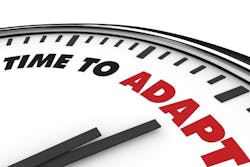Addressing a Multilingual Repair Industry
The industry is becoming more diverse everyday—most prominently with Hispanic technicians. According to the U.S. Department of Labor, Hispanics made up 30.5 percent of the industry’s workforce in 2009, a significant and rapid increase from the 18.5 percent in 2005.
With this change come new challenges. The most critical issue is the need for training opportunities in Spanish, as many of these technicians don’t speak English, says German Mejia, southeast regional manager for I-CAR.
“That’s a challenge that needs to be brought forth to the industry,” says Jeff Peevy, director of field operations for I-CAR. “We acknowledge that special language needs exist in the industry, and we sense that it’s an issue of growing significance.”
The National Auto Body Council (NABC) and I-CAR have been considering plans to address the language issue in 2011. At its meeting in November at SEMA, the NABC approved support for a focus group, known as an In-Language Knowledge Community, to identify whether there’s a need to develop programs to get the diverse workforce access to critical training information it needs.
I-CAR has attempted to cater to Spanish-speaking technicians by using bilingual instructors to teach courses. The instructors work with students to translate course materials and tests.
But Peevy acknowledges that I-CAR efforts haven’t been completely successful for two reasons:
• Material translations. English to Spanish isn’t a direct translation, Peevy says, and that can be a challenge. If you directly translate the materials to Spanish, it can create different meanings that might cause students to answer test questions incorrectly.
• Industry illiteracy. Many people in the industry, regardless of language spoken, can’t read, Peevy says. “We’ve found that in some of the materials we have translated, some of the technicians still struggle with reading, even in their own native language.”
The Industry’s Responsibility
Some people aren’t in favor of catering to Hispanic technicians in Spanish because they feel immigrants ought to learn to speak English, explains Karen Fierst, owner of KerenOr Consultants and member of the NABC board of trustees.
To their way of thinking: Why has it become the industry’s responsibility to help non-English speakers succeed?
The I-CAR perspective is this: It’s about fulfilling the institution’s vision for the industry, Peevy says. I-CAR’s vision is for every person in the collision industry to have the necessary knowledge and skills relevant to their position to achieve a complete and safe repair.
“We want everyone in our industry to have the skills they need to succeed; it’s something that we are very aware of and will continue to be sensitive to,” says Peevy.
So far, there aren’t any concrete ideas in place on how exactly to do that. “The answer to what services or programs diverse people in the industry need access to will be considered and recommended by NABC’s In-Lanuage Knowledge Community,” Fierst says.
The bottom line: non-English speaking people can certainly learn to be high quality technicians if there’s training available that adequately meets their needs, Fierst says. The industry needs to foster an environment that allows these people to grow and excel, in spite of the fact that they’re not proficient in English, and may never be.
“These guys are here and they’re doing the work,” Mejia says. “We need to find a way to train them properly.”
